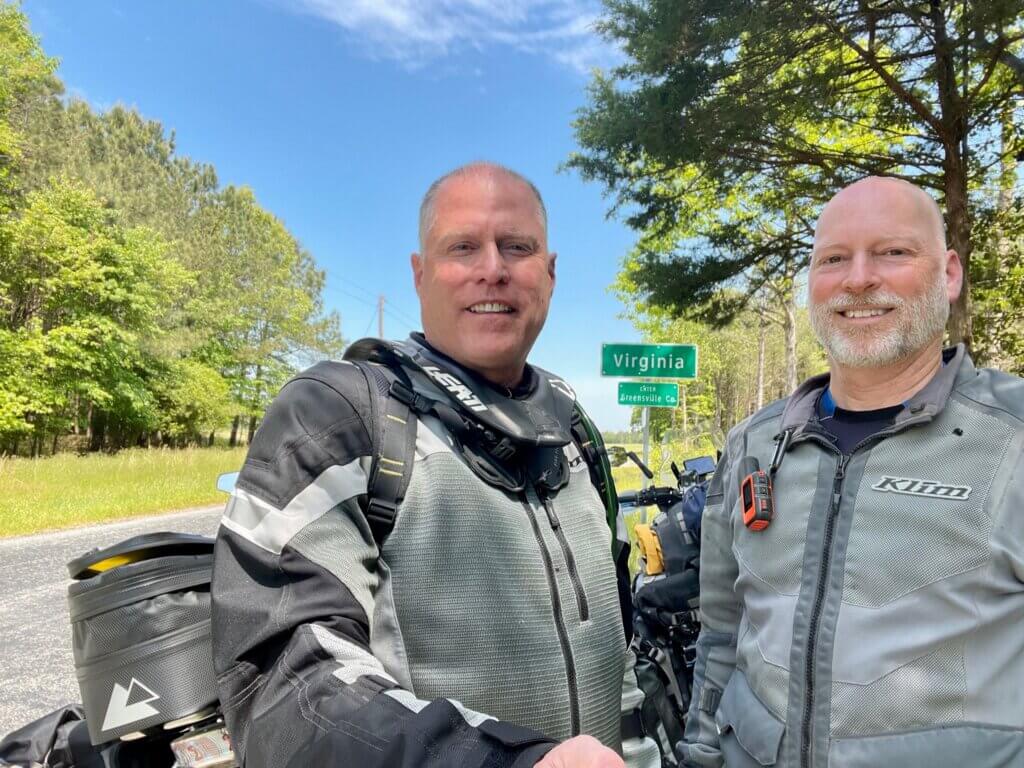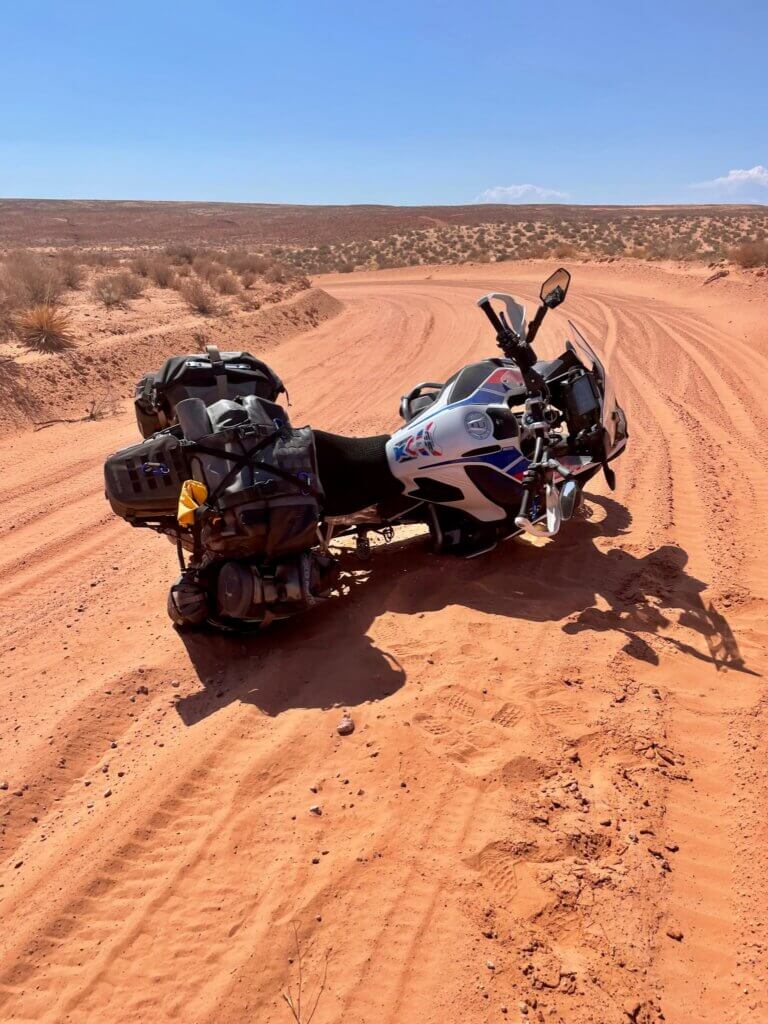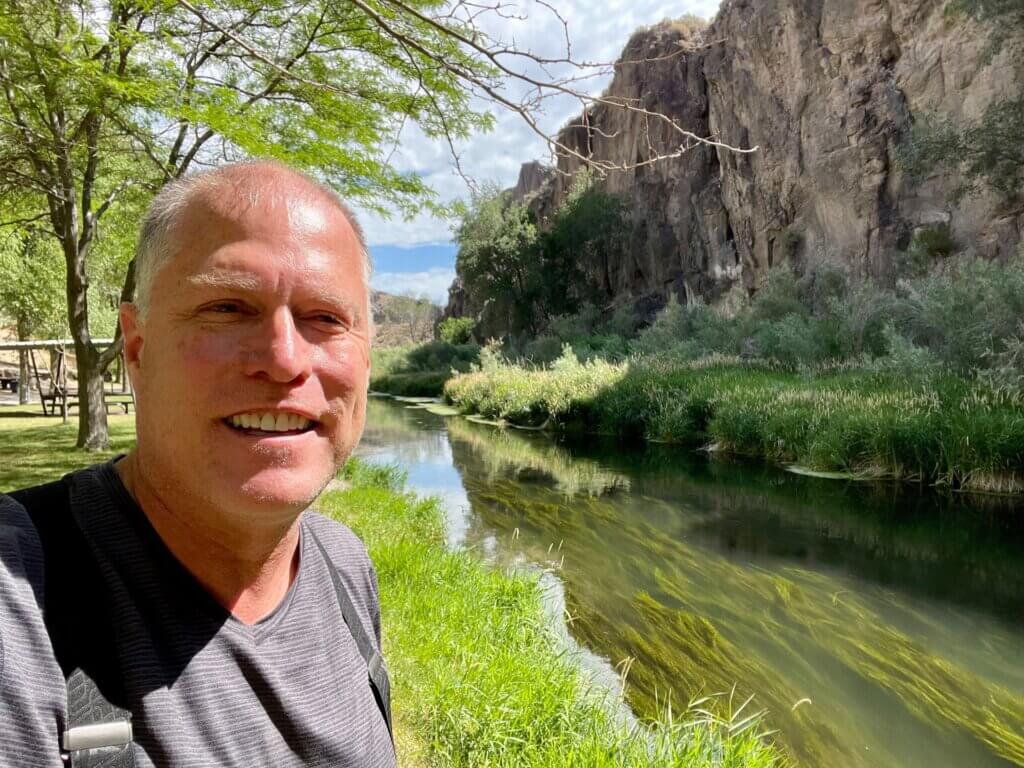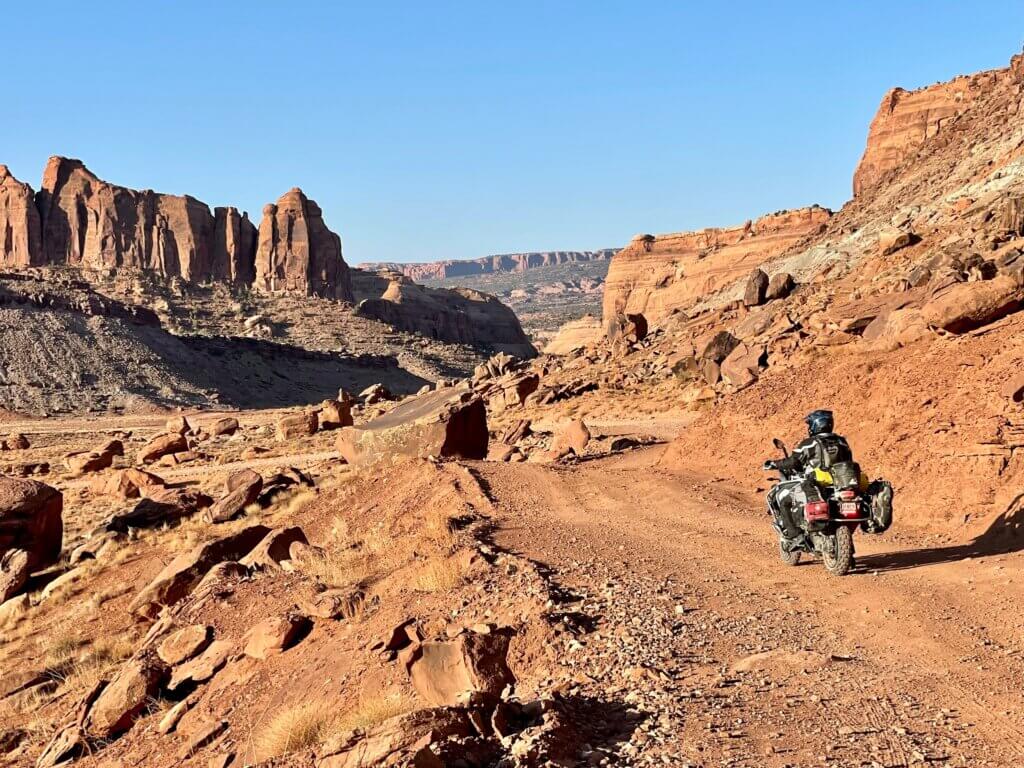Chasing a Dream —
Crossing The U.S. On The Trans-America Trail
After selling his family business, Pat Carroll was in a place to rediscover old pursuits–and meet new challenges.

WITH PAT CARROLL, CEO OF CARROLL MANAGEMENT AND INVESTMENT, LLC
Not long ago, Patrick Carroll was in the middle of his only daughter’s wedding, when the bride’s veil caught on the aisle. Instinctively, he jumped into “dad mode” to help his daughter. Despite the careful, intentional planning that led up to the big day, unexpected surprises were inevitable.
Pat credits his problem-solving inclination to his engineering training and the lessons his father instilled in him. Pat had flown planes, graduated from engineering school at Auburn University, worked on the Tomahawk missile system at McDonnell Douglas, and studied for his Master’s at Princeton. He understood the importance of planning.
But the best laid plans have a way of taking us down unexpected trails. Pat ended up leaving aerospace engineering to work in his father’s trucking business, moving from sales to division head to eventually become the manager of the company’s two East Tennessee locations.
The business was kind of like a ball and chain. You can’t unstick yourself from it.
As much as he loved the work, “The business was kind of like a ball and chain,” he recalled. “You can’t unstick yourself from it.” For decades, Pat always had one eye on the business, never away for more than a week at a time, even taking problem-solving calls on vacations.
When the Penske organization made them an offer, Pat was able to sell the business and retire. In such a capital-intensive business, “All that wealth is tied up in your assets,” Pat says. “I didn’t feel rich at the time. All of a sudden, all these things that you’ve got your money tied up in—forklifts, pickup trucks and tools and cranes and company vehicles and parts—they were on your balance sheet. They aren’t worth anything until you sell them. Then one day, somebody comes along and writes you a check for all of it. My net worth didn’t change, but my wealth changed significantly, and certainly my sense of wealth. It was a big day, and I really felt it,” Pat remembered.
Retiring unlocked a newfound freedom to pursue his passions for travel, adventure and off-road cycling. After a two-week safari in Southern Africa with his family, he reflected on his other interests and returned to off-road riding.
The Film, The Bike, the Big Idea
Although Pat had loved riding for a long time, it was a documentary that inspired him to make a big leap toward an epic adventure. Watching The Long Way Round, following Ewan McGregor and Charley Boorman on an around-the-world trip, gave Pat the idea to embark on his own cross-country motorcycle ride. All he needed was the right equipment to get there, a riding partner to share the adventure, and his family’s blessing to chase this dream.
Pat was a lucky man, because he had all three, plus the time and money to connect the dots in between. He was determined to buy a GS bike like McGregor’s, only to discover that the model seemed too tall. He took a training class at BMW, learning and mastering technical skills and safety protocols from expert instructors. That class led him to buy his own GS in a different model, and take another class, in California, specifically for GS off-roading.
Riding across the Continental Divide, he met a fellow retiree, Jeff Sachs who had recently sold his own business and shared several similarities with Pat. The two clicked, Pat found his adventure-biking partner and was ready to plan their ride across the Trans America Trail (TAT), the first leg of his own around-the-world journey.
The Preparation
Before selling the business, Pat met with Rather & Kittrell to create a dynamic road map for their financial and life goals.
While RK had acted as a dedicated CFO for his family, they couldn’t protect him on his trip. For off-road cyclists, it’s all about the technical challenge, riding with precision to navigate twists, turns and rough terrain. Real riders are often able to step off of the motorcycle and allow the bike to fall, instead of themselves. The classes they took in California and with BMW helped equip them with the training, insights and equipment to handle a ride like this one.

THE PLAN, THE START, THE TREE
Jeff and Pat were set to ride the TAT from the East Coast to the West. They downloaded the GPS trail and made a plan to start at Nags Head, NC, traversing the eastern part of the TAT while the weather was cool, accepting that certain factors couldn’t be planned for. “Just like hiking the Appalachian Trail, it isn’t that the average person can’t do it. It’s just that the average person won’t,” Pat says.
After settling on a departure date, they packed their gear. Crossing the Appalachian Trail, they met hikers who asked if they’d earned their trail nicknames yet. It wasn’t long before Pat had his.
They had smooth sailing for the first week. Then, they hit a major speedbump. Or, rather, it hit them. Pat was cruising along a dusty dirt road near Sapphire, NC, at 25 miles per hour, with Jeff just a few miles behind, when a tree the size of a telephone pole came crashing down on his motorcycle. Lying on the ground, in front of the handlebars of his newly-destroyed motorcycle, Pat let out a grunt. A four-inch tree branch had caught him in the chest, acting as an airbag as he hit his head on the fallen tree.
Only a week into the trip, Pat had earned his nickname—Maple. Unfortunately, this meant the trip was on hold until Pat could purchase and outfit a new bike.
In the riding community, they use an acronym–ATGATT–to remind themselves of the importance of safety and staying protected: All the Gear, All the Time. Following the principle behind that acronym kept Pat alive and able to walk away. Although he hadn’t anticipated that moment, he had planned for it.
CHALLENGES AND CHERISHED MEMORIES
After six weeks, Pat had a new bike and Jeff’s bike was outfitted with new suspension. They restarted their ride on June 21, traveling through Tennessee to Lake Pickwick. Gravel roads and farm trails in Mississippi and Arkansas took them to the infamous Warloop Road, a challenging rocky trail for heavy bikes loaded with gear in the 100-degree heat.


Pat and Jeff knew that weather and terrain on the mostly off-road ride would determine the speed and distance they reached everyday. Improvisation was necessary, so they discussed lodging for the evening during lunch, each day.
They often ate at the closest restaurant to their hotel, frequently finding Mexican restaurants and a few great diners, steakhouses and country classics. One evening, they arrived at their lodging after all the restaurants had closed, so they prepared dinner with their camping equipment in the hotel room.
In one-block-long Prairie City, ID, they found the only hotel, a four-room gem next to the Oxbow Restaurant. There, they learned the fascinating story of a mahogany and rosewood carving of “Two Virgins” anchoring the bar. The well-traveled carving embodied the adventurous spirit of the two bikers. Jeff Sachs said, “It’s amazing the places you see when you just ride and stop when the road ends.”
They descended through the passes of Colorado, admiring the glistening snow banks and vivid green passes. Experiencing this majestic scenery was the pinnacle of the adventure for Pat. Colorado had everything they set out looking for: difficult rides, geographical complexity and sublime beauty. The crisp, cool air made the setting and the moment absolute.
Note: Here Pat experienced a “get off,” which is when the bike goes down in the sand while riding.
They traveled through afternoon storms and mud so thick that they had to stop every few feet to clear it from their bikes, even unloading their luggage to lighten the bikes. In Utah, they marveled at the red rocks of Moab and hit high speeds on the famed Bonneville Salt Flats, a place known for land-speed records.
30 days and three flat tires after they set out on the TAT, Pat and Jeff reached the West Coast. Entering the shoreline on his beloved GS, and actually being able to touch sand was a beautiful experience. “My tires had to touch Pacific water. I rode down the sand, along the beach… spraying salt water up,” Pat remembered.
THE COMMUNITY OF THE ROAD
In Marshall Pass in Colorado, they tackled one of the steepest stretches of the trip. When they reached the top, at 10,000 feet, they had two realizations. First, they had taken the shorter, tougher route instead of an easier way around. The second was prompted by a chance meeting with a man in his seventies, who had ridden all the way on his mountain bike. They spoke with the man for a bit and paused to reflect on what they had just achieved and what they might be capable of, later in life.
The inspiration fueled a new outlook, which stuck with them for the rest of their journey. Along the way, they met kayakers, fellow adventure riders and vacationing families, discovering a sense of alliance and camaraderie among travelers.
Along this high-altitude section, some of Pat’s tools and gear fell out of the tail bag without his knowledge. Still, he managed to return home with nearly all of his things. How? Fellow bikers—total strangers—traveling behind had collected his fallen gear and returned it. They had each others’ backs, even if they had never met before.

THE NEXT LEG
Jeff and Pat are already on to planning their next trip. Over 70 days, they will travel from Cartagena, Columbia, to the southern tip of South America, in Ushuaia, Argentina, with another group of riders. Along the way, they will explore Macchu Picchu, the Atacama Desert, Patagonia and some of the notorious Bolivian Death Road. As always, Pat recognizes that his hard work and success in his life, career and adventures carry with them a measure of good fortune in the people who have helped along the way. “I’m very privileged, very blessed,” he says.
More Ways to Thrive
RK talks about what guides us in life and how to incorporate that into financial decisions.
Supporting the arts is more than a passion born of generosity. It also builds better communities.